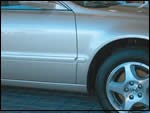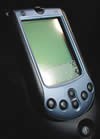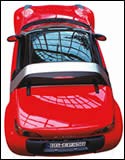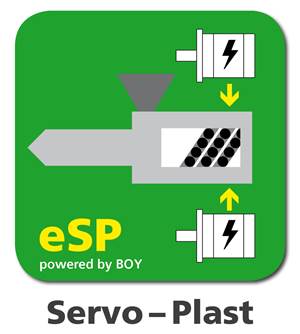Where the Action Is: Decorating with Formable Films
Plastics processors are eyeing form able films as an economical, durable, and environmentally friendly means of producing fully decorated parts right out of the mold.
Plastics processors are eyeing form able films as an economical, durable, and environmentally friendly means of producing fully decorated parts right out of the mold. In-mold decoration (IMD) with form able film inserts is replacing traditional post-mold painting, printing, hot stamping, and chrome plating. The process achieved its first successes in modestly sized and relatively flat parts for interior and exterior automotive trim and cell phones. Today, IMD technology has progressed to much larger 3D parts such as entire instrument panels, bumpers, fascias, roofs, and even hoods for cars and trucks. What’s said to be the first commercial unpainted horizontal body panel has already appeared on the Smart two-seat roadster.
IMD eliminates the expense of secondary operations, which is proving especially attractive to the automotive industry. According to Venkatakrishnan Umamaheswaran, industry manager for Lexan SLX body parts at GE Plastics, “Paint is one of the most expensive components on a car.” He says the paint line is the biggest investment in an auto assembly plant; it occupies half the plant floor space; and it can generate over 1500 tons a year of VOCs.
IMD also boasts lower scrap rates, ability to mold and decorate in one location, and improved recyclability. IMD can achieve a Class A surface without the flow marks that can occur with molded-in color. However, the economics of IMD can suffer if there are a lot of holes in a part that require a post-mold trimming operation.
IMD advocates say auto body panels made with the newest generation of formable films have scratch and impact resistance equal to or better than painted sheet metal. However, IMD is not expected to totally replace paint in the near future, given the auto makers’ large investment in paint lines. However, industry observers believe that very few, if any, large automotive paint lines will be built again in the U.S.
The IMD or film-insert decorating process starts with a thin plastic sheet that is printed, coated, or pigmented for decorative effect. It is die cut into a blank and thermoformed to the shape of the final part. After being trimmed, it is then placed in an injection cavity, where it is back-molded with a compatible substrate. The surface can be a solid color, metallic appearance, woodgrain, or symbols and graphics.
More recently, formable film decorating has expanded well beyond injection molding. Film inserts are now being used over substrates of thermoplastic or polyurethane composites (see box, p. 46). Moreover, thick-sheet forming (TSF), which involves direct thermoforming of finished parts from sheet laminated with decorative films is emerging as another promising approach to finishing large parts such as truck bumpers, rocker panels, and tonneau covers (see p. 52).
IMD got its start with screen- or offset-printed films that imitated woodgrain or provided instrument dials and graphics. The print can be on either the “first” surface of the insert (ink, film, substrate) or the “second” surface (film, ink, substrate). Second-surface construction, which allows the printing to show through the clear film, encapsulates the print and provides much greater durability. The same end can be accomplished by second-surface printing and then laminating with another film layer (film, ink, film, substrate) to provide greater protection for the print from the heat and shear of back-molding. Another way to protect the printing is to place the film on the core side of the mold and overmold it with clear resin. This approach is said to give an especially glossy, wet look.
For the emerging applications in larger 3D auto exterior and interior parts, one trend is toward so-called dry-paint films that provide solid colors, brushed metal, or bright chrome effects. Dry paint films are coated with a paint-like layer that has a degree of stretchability to allow for thermoforming.
An even newer film construction for 3D auto parts is coextruded films with a colored layer protected beneath a clear outer layer. Proponents of such structures say the colored layer may be more suited to thermoforming complex, deep-draw parts than the thinner color coating on dry paint films.
IMD stands up to weather
The leading edge of IMD development is in weatherable Class A finish for exterior automotive and heavy truck applications. Of the six major suppliers of formable films for IMD, five offer outdoor weatherable products and the sixth is working on it.
- Avery Dennison offers Avloy Dry Paint formable films made with an acrylic/PVDF, colorcoat/clearcoat construction. The film is laminated to a thicker (20- to 30-mil) backing sheet such as ABS or TPO. Thick-sheet options are available for thermoforming finished parts. Avloy film finishes can match the full range of high- or low-gloss solid colors, metallics, and pearlescents available with liquid paints. Brushed-metal effects and printed patterns can also be produced.
- Soliant LLC offers Fluorex dry-paint, clearcoat/colorcoat films, which appear on several production cars. These four-layer constructions consist of a top clearcoat made of an acrylic/fluoropolymer blend, a color coat of the same material, a tie coat or adhesive layer, and a backing layer of ABS, TPO, PVC, or PC, depending on the substrate for which it is intended. Backing thickness can be from 0.3 to 300 mils.
- Soliant makes Fluorex T/HR for extrusion lamination and Fluorex 2010 for IMD. Printed patterns, including brushed-metal appearance, are available for both interior and exterior applications. The newest product is Fluorex Bright film with a wide range of bright-chrome effects, including colored and black chrome. It has completed 1-yr Florida and Arizona outdoor testing.
- Mayco Plastics makes four-layered “molded-in-color” (MIC) formable films for IMD. It uses the film for its own IMD projects but also plans to sell it in rolls, precut sheets, or preformed shells. Mayco is also developing thick-sheet forming (TSF) versions. The Class A glossy film is coextruded of ionomer and PP. Both the top clear coat and color coat underneath it are based on a new uv-stabilized ionomer from A. Schulman. The third layer is an adhesive tie layer, followed by the bottom backing layer. Depending on the intended substrate, the backing layer can be PP homopolymer or copolymer, metallocene PP, or TPO. The MIC film was used on the front fascia of a limited number of DaimlerChrysler’s 2002 Dodge Neon cars. The company is currently installing two 3000-ton injection machines to mold the front and rear fascias for the Neon 2004 and 2005 models with its IMD films.
- Senoplast USA makes Senotop coextruded three-layer film in thicknesses from 1 to 2 mm. It can be used for IMD or direct thermoforming. The PMMA top clearcoat is followed by a PMMA color layer and a base layer of ASA/PC blend. The latter reportedly adheres to ABS, ABS/PC, ASA, ASA/PC, PC, and PBT/PC.
- GE Plastics offers coextruded films with a clear, glossy cap layer of new Lexan SLX polycarbonate copolymer, which has a uv blocker built into the polymer backbone. It protects a pigmented layer of Lexan PC. The film can be back-molded with PC, PC alloys, or most polyesters. GE also has been developing tie layers that will allow Lexan SLX films to be used with other substrates. An example is a film with a PC/ASA tie layer to adhere to a glass-reinforced polyurethane substrate for the roof module of the Smart roadster. Also in development are a chrome-look IMD film and a UL 94V-0 film of Ultem PEI for high-temperature uses.
- Bayer Polymers, which recently merged its film marketing and sales with its Sheffield Plastics subsidiary, is looking to expand its IMD technology to exterior automotive applications. “What has already occurred on the interior of the car with this technology will make greater inroads on the exterior,” says Patrick Griffin, senior market development specialist for IMD. Bayer is developing a formable coating system that will be equivalent to automotive paint. “We are about 60% there,” says Griffin. The coating will be applied to Bayer’s Makrofol PC and Bayfol PC/PBT films, which are compatible with ABS, PC and PC/ABS substrates.
Class A without paint
Several Class A auto-exterior IMD applications are already on the road. Soliant, which appears to have the most production applications to date, is focusing on decoration of entire components, like rocker panels, rather than accent trim. TPO components account for the largest share of Soliant’s IMD applications. Current 2003 and 2004 production applications for Fluorex IMD films include Acura 3.2 TL rocker panels and body side moldings, Toyota Avalon rocker panels, Cadillac Seville and De Ville A and B pillars, Honda Odyssey body side moldings, Renault Laguna upper and lower grille parts, and roof strips for Audi, Volkswagen, the Nissan Maxima, and Volvo S80 and S60. The company is currently working on a roof module. In addition, marketing director John Cupstid sees considerable potential in bumper fascias.
For Soliant, direct thick-sheet thermoforming has accounted for at least 50% of the company’s business. Although these are primarily simpler and flatter parts, they include very large ones such as the new aftermarket bumper for Class 5 to 8 trucks made by Hendrickson International. Programs in production also include the Chevrolet Trailblazer rocker panel and Chevrolet Impala taillamp.
Mayco Plastics is also focusing on large car parts such as front and rear fascias and body panels, although president Tim Hoefer says its coextruded MIC film technology is also applicable to trucks, off-road equipment, appliances, and furniture. Up to now, dry-paint films such as Soliant’s Fluorex and Avery Dennison’s Avloy have had the advantage over coextruded films when it comes to light metallic colors. Hoefer concedes that it has been difficult to achieve metallic colors in coextruded films. But he says Mayco’s MIC film can match metallic body paint due to special features in the film extrusion die that help orient the metallic flakes.
Adds Todd Sweeney, GE’s global market manager for Lexan SLX, “We have matched a fairly wide range of metallics, and we are continuing to expand our color pallet to include light metallics and silvers.”
IMD applications for GE’s Lexan SLX films could include wheel covers, accent parts, and roof panels. The company has four new programs for exterior vertical and horizontal body panels that are still confidential. Applications in the works include front fascias, fenders, door panels, mirror housings, and trunks. GE also has a hood in development.
Avery Dennison has generally focused more on smaller parts—primarily decorative appliqués. Examples are body side moldings on 2000 to 2004 Honda Civics, rear tailgate garnish on 2001 to 2004 Ford Mercury Grand Marquis models, and wheel garnishes on GM’s SSR concept-car roadster.
Says senior marketing manager Mike Kozbial, “We feel that we can’t be cost-effective right now in larger applications such as bumpers and roof panels. Everybody wants to do bumpers, but there are still issues such as getting the metallic-pigment look and the stretch of the film for proper edge wrap.” He also cautions that the edge trim from large parts can be expensive—for example, a 1-sq-ft part could require a total of 2 sq ft of dry paint film, including trim.
Senoplast has three developmental programs for roof modules that use a thermoformed Senotop film backed up with long-fiber PUR composite. The first serial production is on the front spoiler and rear plate of the moon roof of a 2003 Smart car. Another developmental IMD program is injection molded ABS/PC fenders and bumpers of Smart cars. Also, an American auto maker is developing A and B pillar covers with Senotop IMD film, says marketing manager Andreas Hoellebauer.
Alternatives to chrome
Soliant’s new Fluorex Bright film made its debut on a thermoformed Class A bumper fascia for the aftermarket of Class 5 to 8 trucks. The ABS bumper with chrome luster film is made by Hendrickson International. It uses more than 20 sq ft of film and has deep draws requiring draw ratios of up to 50%. It’s the first nonmetallic bright bumper of such a size, according to Hendrickson’s director of marketing and engineering, Jeff Zawacki. He says the film cost is comparable to chrome plating, although the latter would not be feasible for a part this size. (Only much smaller ABS bumpers have been chrome plated.)
Launched last July, the Hendrickson Aero Bright bumper meets OEM specifications such as 500-hr salt spray, gravelometer, and weatherometer testing, according to Zawacki. He said the driving force was to come up with an alternative to chrome plating that is environmentally friendly and provides a mirror finish that will not chip or peel. He adds that bright-film thermoforming can be adapted to several other components, including grille surrounds, sun visors, mirror housings, and headlight bezels. In fact, 2004 will see its debut as original equipment on Mack Truck’s Granite vocational Class 8 vehicle, which sports a chrome-appearance grille surround.
IMD in auto interiors
Decorative formable films have been used for several years in car and truck instrument and door panels, switches, bezels, and center consoles. Avery Dennison, which has had one of the longest records in this area, anticipates continued growth as OEMs look to diversify their products with different finishes and looks. Mike Kozbial sees IMD being used on many more vehicle interiors than in the 1970s and ’80s, primarily in small areas as a visual accent. He also sees a growing trend to bring body color into the interior of the car—an application for his firm’s Avloy Dry Paint films.
The company also offers Thermark formable film laminates of acrylic or PVC. These include high- and low-gloss woodgrains and burls, geometric and organic patterns, pearlescent lusters, and solid colors. The backing sheet can be of resins such as ABS, TPO, and polycarbonate.
Some current production cars using Avery Dennison films include the Toyota Solara 2004, whose center console features woodgrain and geometric patterns on a metallic base finish. The 2004 Ford F150 pick-up truck also uses woodgrain, metallic, and geometric finishes on the center console. And the 2004 Ford Freestar minivan uses a 1-in. decorative strip across the entire instrument panel.
Auto interior applications have been by far the largest market segment for Bayer Polymers’ colored and printed Makrofol PC and Bayfol PC/PBT films. Two of the biggest IMD uses for the company’s films have been in heater controls (HVAC) and gear-shift ground consoles (PRNDL). Other uses are buttons and keycaps for switches and lighting controls.
Some recent commercial vehicle programs include the HVAC control panel in the 2002 to 2004 DaimlerChrysler Jeep Liberty, which is made with a Makrofol D72 PC film and high-flow PC resin. Others are the HVAC and light-switch housings in 2003 and 2004 Dodge Dakota pick-ups and Durango SUVs. These parts are made with very low-gloss Makrofol VLG film printed with second-surface graphics.
A year ago, Bayer launched the new Fantasia Faria special-effect films. These include Makrofol PC DPF5069 bright metallic-appearance film, which resembles plated chrome and is translucent so it can be backlit and second-surface printed. Tactile effects are possible with Dureflex TPU soft-feel film or fiber-graphics films that have a cloth feel achieved with textile fibers locked in an adhesive layer bound to a film base. Red velvet and denim are just two interesting examples.
Cloth-feel films are also part of the Legacy films line from GE Plastics Structured Products. Based on Lexan PC and Ultem PEI, these films have been used for about seven years in auto interior and non-automotive applications. They include textures such as velvet and suede, as well as high- and low-gloss looks for applications such as PRNDL, HVAC bezels, and other parts of the instrument panel. Product manager Mike Laurin also notes that GE worked with Fiberloc Inc. to develop Lextra II polycarbonate film with nylon-fiber graphic insets that provide a soft, textile-like surface. It has been used on cell phones and also has potential for replacing fabric in auto interiors—e.g., doors, arm rests, steering wheels, and stick shifts.
GE also sees potential for its film laminates with a satin chrome look and other metallic effects for auto interior uses such as dome lights, buttons, and switches. These films have already been used on the outside of the car—for example, as 1-in.-wide accent pinstriping. Their three-layer structure is PVDF or PVF on top, metalized PBT in the middle, and a Lexan PC base.
IMD also serves some non-decorative auto-interior uses. GE’s high-heat Ultem PEI film carries printed circuits for airbags or electronics under the dash.
Serigraph Inc. has screen printed graphics on PC and acrylic films and formed interior automotive parts such as headlight switches and HVAC controls for various OEMs over the last five years. Recent applications include graphic decoration of an instrument-panel cluster and of the 3D gearshift-area part (PRNDL) on 2003 and 2004 cars.
Both Soliant and Mayco Plastics also target auto-interior applications for their films. Soliant has programs under way for decoration of interior bezels and instrument-panel trim rings in metallic effects that tie the exterior body color to the interior.
Senoplast’s Hoellebauer says its Senotop films will be featured on ABS back-molded dashboards and ornamental covers on interior doors of the so-called 2004 “fun car,” whose manufacturer and car line are still confidential.
Non-automotive IMD
Hand-held electronics and appliances are the most significant non-automotive uses for IMD. Cell-phone manufacturers used IMD initially for printed keypads and more recently for some entire A and B covers. GE Plastics’ Laurin says its Legacy high-gloss or textured films have been used on replaceable face plates of Nokia cell phones. Motorola also uses these films for the A-cover, lens (which uses a hard-coated IMD film), and the keypad of its flip-phones.
However, IMD is said to be losing ground in this area, except for specialty applications. According to Bayer’s Griffin, “With a two- to three-month cycle from concept to production, and a product life cycle of no more than six months, cell phone makers are having difficulty getting suppliers to print, form, and injection mold the large volumes required. Moreover, they are looking for very low-cost decoration. In general, IMD works best for a piece of equipment that sells for more than $200.”
Film suppliers see potential in several other electronics applications, including some that currently use molded-in color. Examples are laptops, gaming devices, and tv monitors. GE’s Laurin points to the Palm Pilot PDA and GPS devices, whose front covers and lenses are made with a polished or textured Legacy PC film.
Bayer’s Griffin says the white-goods appliance market is promising for IMD, mainly in external control panels for washing machines, dryers, dishwashers, microwave ovens, and even refrigerator ice makers. IMD has found similar applications in medical and industrial electronics—namely control panels that have IMD ap pliqués instead of a separately molded and adhesive-bonded appliqué.
Adds GE’s Laurin, “Most panels on units such as washing machines have tended to be flat and have been using overlay technology. But there is a move to more geometry in these parts, and as they become more three-dimensional you are likely to see IMD technology replacing overlays.”
Serigraph design engineer Mike Ruminski also sees appliances as a growth market for IMD. Among his firm’s recent production programs are internal components for two major refrigerator manufacturers using back-molded acrylic and PC films with second-surface printing. Other components have been printed PVC and PP films for washers and dryers.
GE Plastics’ Johnson says Lexan SLX film is finding a niche in non-automotive uses such as the fender on the Segway transporter, where the film is back-molded with Xenoy PC/PBT. New applications that may surface as early as this year include enclosures for outdoor communications equipment. “We are looking at many other market segments for Lexan SLX IMD where its weatherability, chemical resistance, high gloss, and superior scratch resistance would be required. The aim is either paint elimination or replacing molded-in color that has a fairly limited life outdoors,” he says. Targets include heavy trucks, lawn/garden, construction, and marine applications.
Related Content
50 Years...600 Issues...and Still Counting
Matt Naitove marks his first half-century in plastics reporting, with a few of his favorite headlines.
Read MoreConsistent Shots for Consistent Shots
An integral supplier in the effort to fast-track COVID-19 vaccine deployment, Retractable Technologies turned to Arburg and its PressurePilot technology to help deliver more than 500 million syringes during the pandemic.
Read MoreMachine Series Debuts for Chen Hsong
Chen Hsong has three injection molding machines in its booth, including 2-platen, hybrid and a next-generation line with improved platen and toggle design.
Read MoreUpdated Control, Cooling Water Distribution, Electromechanical Ejector and Injection
NPE2024: Boy’s U.S. subsidiary marks its 50th anniversary in Orlando with six machines and U.S. intros for the Procan ALPHA 6 control, and hybrid ejectors and injection units.
Read MoreRead Next
Why (and What) You Need to Dry
Other than polyolefins, almost every other polymer exhibits some level of polarity and therefore can absorb a certain amount of moisture from the atmosphere. Here’s a look at some of these materials, and what needs to be done to dry them.
Read MoreProcessor Turns to AI to Help Keep Machines Humming
At captive processor McConkey, a new generation of artificial intelligence models, highlighted by ChatGPT, is helping it wade through the shortage of skilled labor and keep its production lines churning out good parts.
Read More



























.png;maxWidth=300;quality=90)





